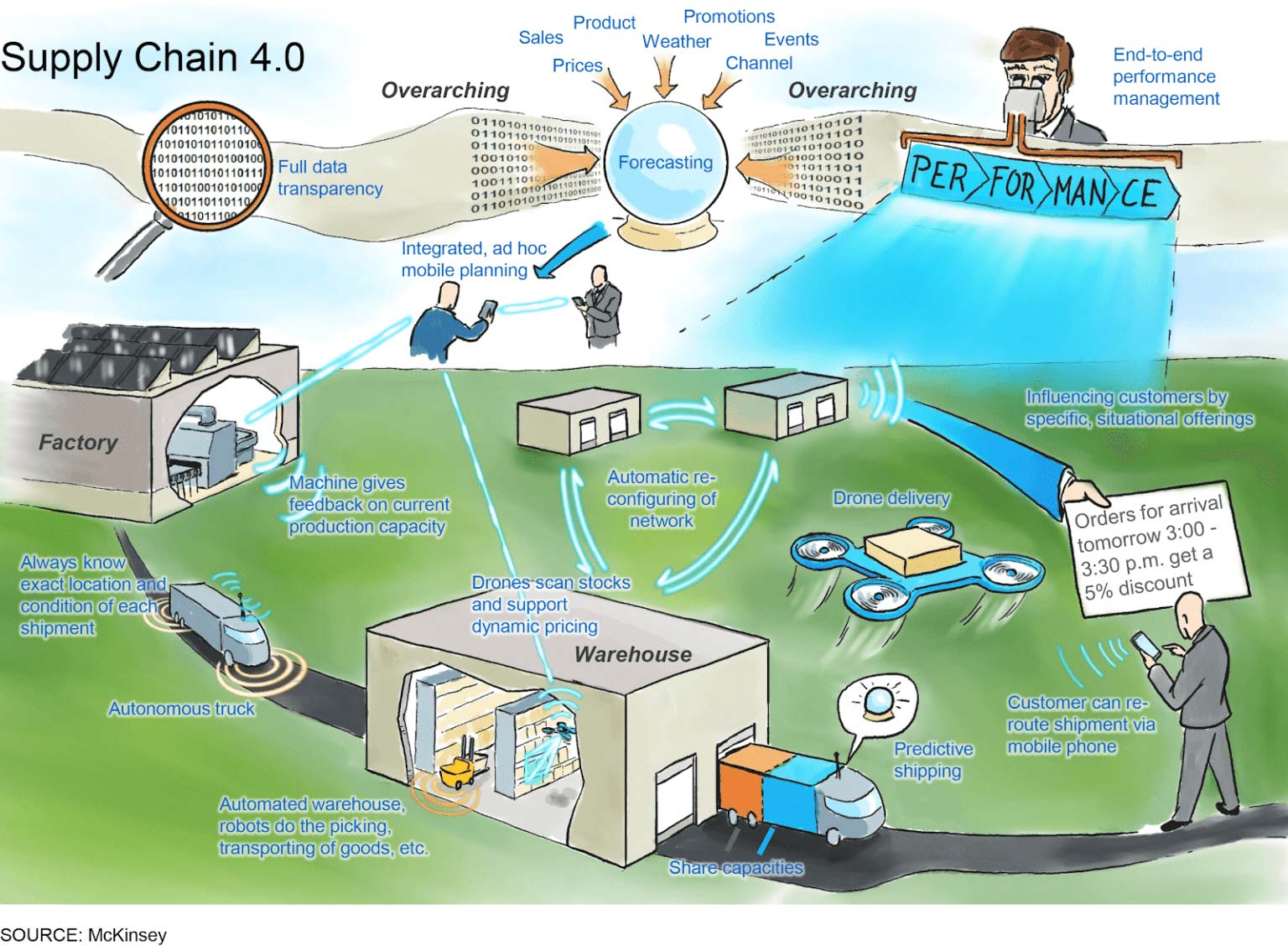We can rebuild it, we have the technology. We can make it better than it was. Better, stronger, faster… The next generation of supply chain is almost here, and it’s digital.
Supply Chain 4.0 incorporates emerging technology — blockchain, AI, autonomous trucks, drones, 3D printing, augmented reality, and more — into every aspect of the supply chain, rendering it nearly unrecognizable from today’s capabilities.
More and more logistics start-ups are gaining ground in the warehousing and fulfillment industry through agile pricing and advancements in one or more emerging technology, like predictive inventory management and automated workflows powered by machine-learning algorithms.
Take ShipHero for example. Advancements in machine-learning powered supply chain forecasting and platform-based integration capabilities have allowed us to intelligently distribute inventory to lower shipping costs and delivery times. That’s why ShipHero has rapidly scaled to ship over $5 billion orders to date.
So, what else does the future of logistics hold? Let’s dive in to find out.

Safe & Efficient Warehousing
Warehousing operations like picking and packing orders will be extremely precise and lightning fast, not to mention much safer, thanks to augmented reality (AR).
AR headsets (think, Google Glass) could illuminate the most efficient route around a warehouse like a GPS right in front of your eyes, and clearly point to the exact items that you need to pick.
High-tech wearables are already incorporated into warehouse safety protocols to allow employees to signal for help and receive emergency assistance, and AR headsets with live-streaming capabilities would further improve the safety of employees while allowing employers to monitor and optimize productivity.
Reduced Transportation Cost and Duration
Long-distance trucking and last-mile delivery will become quicker and cheaper with the advent of autonomous trucks and drones.
Today, truck drivers are restricted to a limited amount of time on the road, rightly so to avoid tired driving, reduce accidents and mitigate dangerous driving. With the help of automated driving systems, it could help the trucker shortage and bring renewed interest to the profession, while allowing truck drivers to spend more time on the road.
Amazon Prime Air has shown that drones can deliver packages under 5 lbs in 30 minutes to select locations. Though not yet in operation, the drones will autonomously zoom through the skies to deliver the package to an outdoor delivery target. New transport concepts like drones or robots help companies improve that last-mile delivery for high-value packages.
Supply Chain-as-a-Service
There’s Print on Demand, and then there’s 3D Print on Demand.
By sharing design specs with a 3PL or fulfillment provider, retailers could repurpose their fulfillment centers as small-batch manufacturers that use 3D printers to create products in-house, thereby reducing shipping times for expedited orders.
This would allow 3PL and fulfillment providers to offer full-service supply chains to the growing number of online brands and ecommerce startups.
Advanced Inventory Control
Blockchain may sound a bit vague or abstract in the supply chain space, but essentially this can be used to scan QR codes and track the journey of an individual product (rather than groups of SKUs) throughout the supply chain. Once scanned, relevant product data is automatically synced for all business systems simultaneously.
Real-time data flowing between your systems allows for precise inventory forecasting and restocking capabilities. More in-depth tracking of your inventory also helps utilize the ‘shared economy’ where Uber and local delivery providers can seamlessly deliver products on your behalf.
This advanced form of collaboration also allows companies to easily detect fraudulent products, locate lost or stolen goods, and identify sources of product damage at each step of the supply chain.
Scale Instantly
Platforms like Shopify and Amazon have allowed ecommerce merchants to access a wide-range of capabilities that they otherwise would have to invest in and build themselves. In terms of supply chain, by linking via API to a large number of carriers and providing customers with negotiated rates, smart fulfillment companies like ShipHero allow their customers to directly compare their options and select the best shipping method.
Supply chain today is nearly unrecognizable to the paper-based and manual processes of the past. With exponential growth, the supply chain of the future will be far more integrated and efficient to what we have today. Startups like ShipHero are beating traditional carriers by leveraging tomorrow’s technology for today’s business needs.